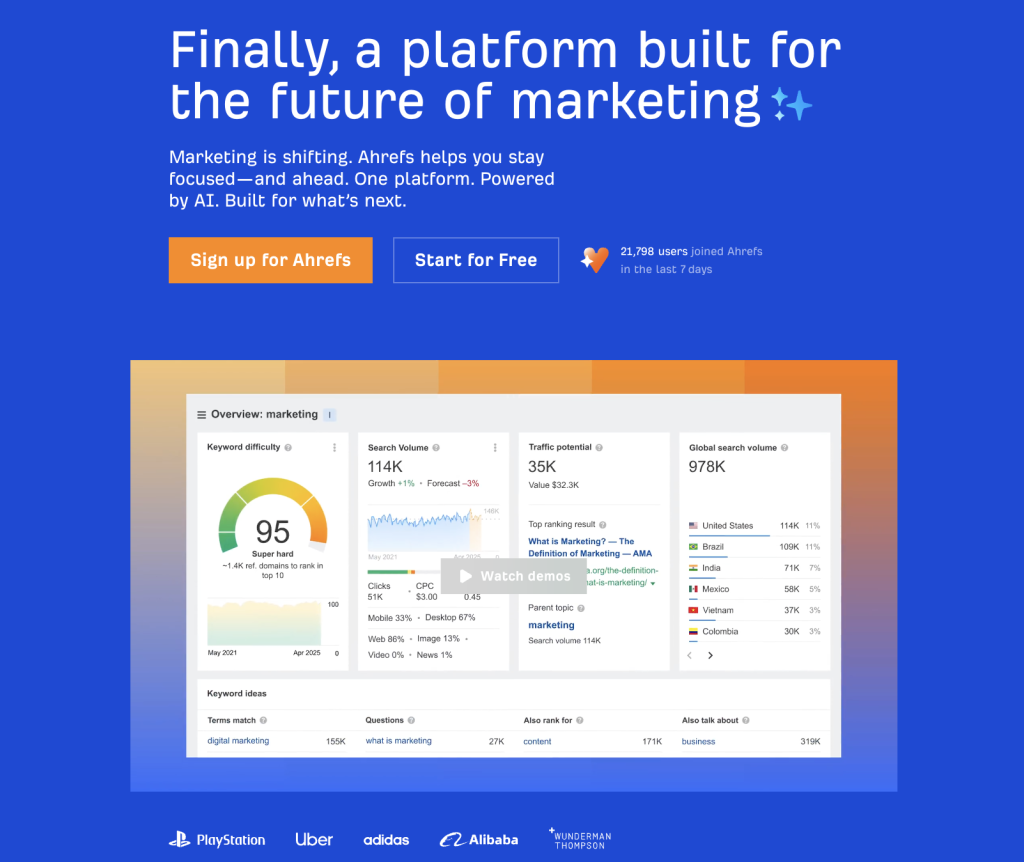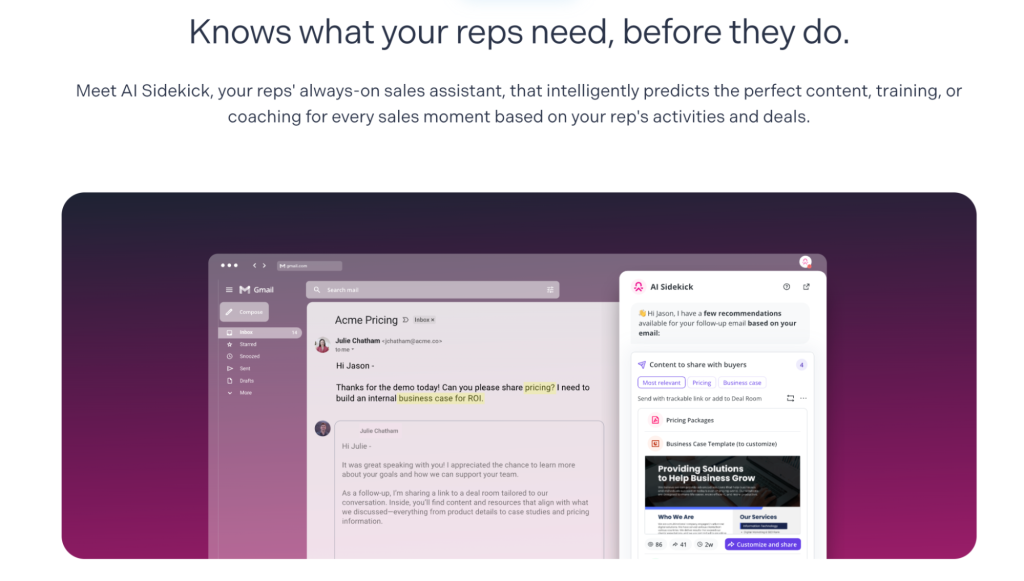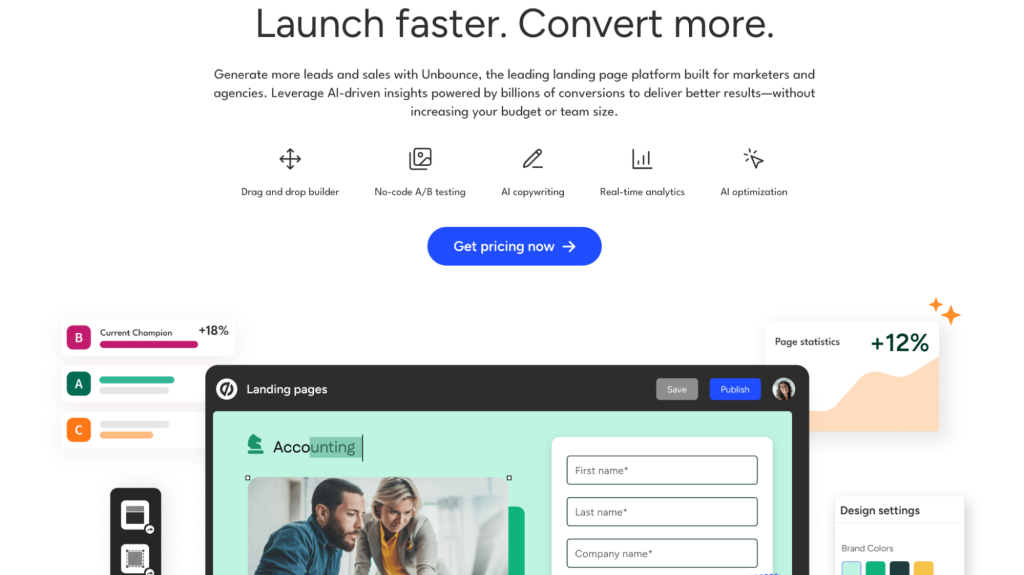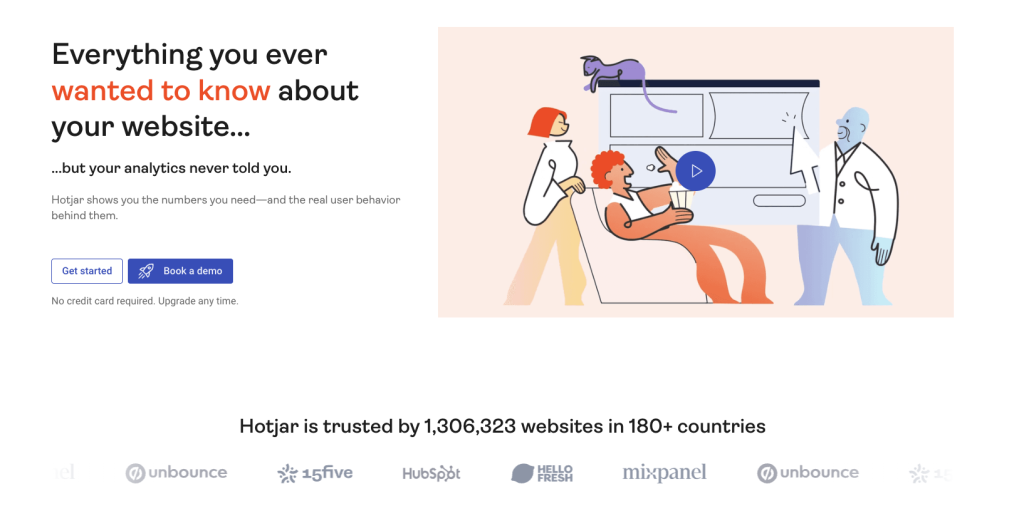Marketing in 2025 is a full-contact sport.
Audiences are spread across platforms. Buying journeys are longer (and weirder). And teams are often cobbling together insights from six different tabs just to answer one question: “What’s working?”
That’s where having the right stack of marketing platforms comes in. Not a bloated mess of features you don’t use — but a toolkit that actually helps you move faster, reach the right people, and adapt with confidence.
Below are 7 marketing platforms that cover key stages of a modern marketing workflow — from cold outreach and SEO to landing pages, internal enablement, and behavior-driven automation.
1. Woodpecker
Best for: Cold outreach, follow-ups, and outbound sales automation

Woodpecker is a cold email platform that’s purpose-built for modern outreach. If your marketing involves reaching out to prospects, partners, media, or influencers, this is your quiet weapon. It helps you send personalized emails at scale, automate follow-ups, and track replies — all without looking like spam.
Unlike traditional email platforms, Woodpecker focuses specifically on cold communication. That means advanced deliverability features, bounce protection, and reply detection that actually stops sequences when a contact responds.
Feature users love:
Smart sending schedule – Woodpecker spaces out your emails automatically to avoid spam filters and keep things human. It even pauses campaigns on weekends or holidays if your contacts aren’t working.
Why it belongs in your stack:
It’s the ultimate “first touch” tool. Combine it with Ahrefs (to research prospects), or Customer.io (to handle follow-ups after signup), and you’ve got a complete outreach-to-onboarding funnel.
2. Ahrefs
Best for: Competitive research, brand visibility, and SEO strategy

Ahrefs marketing platform is a suite for marketers who want clarity. Whether you’re chasing organic traffic, trying to outrank a competitor, or wondering why your brand doesn’t show up in ChatGPT answers, Ahrefs has the answers.
Armed with 15+ years of real-world data, it offers deep insights into keywords, backlinks, competitor performance, and even how your brand appears across AI-generated platforms like Google SGE and Perplexity.
Feature users love:
AI visibility tool – See how your brand performs not just in Google search, but in AI answers across the web. It’s one of the only tools tracking this kind of exposure.
Why it belongs in your stack:
It’s your marketing radar. Use it to spot gaps, prioritize content, reverse-engineer your competitors’ traffic, and keep your strategy ahead of the curve — not stuck chasing last month’s rankings.
3. Spekit
Best for: Product marketing enablement and internal communication

If marketing ends at launch, you’re doing it wrong. Spekit keeps your internal teams in the loop so they can sell, support, and speak about your product with confidence. It embeds micro-training, docs, and tooltips inside the tools your team already uses (Salesforce, HubSpot, Gmail, etc.).
This product marketing software is especially helpful for product marketers rolling out new features or messaging. Instead of sending another Slack or Notion doc that no one reads, you give your team just-in-time guidance right where they work.
Feature users love:
In-app tooltips – Teams don’t need to search for answers. They get them contextually, while they’re working in the CRM or product dashboard.
Why it belongs in your stack:
Because internal misalignment kills good campaigns. Spekit makes sure what you say externally is backed up by what your team knows internally.
4. Unbounce
Best for: Building and testing landing pages that convert

Unbounce is ideal for marketers who want to launch new campaigns without waiting two weeks for a dev handoff. It lets you spin up, test, and optimize landing pages with drag-and-drop tools and AI enhancements.
Its “Smart Traffic” feature automatically routes different segments of your audience to the version of a page that’s most likely to convert. That means more signups, demo requests, or purchases — with less guesswork.
Feature users love:
Smart Traffic – Starts optimizing your landing pages with as few as 50 visits, automatically sending each user to the best-performing version.
Why it belongs in your stack:
Traffic is hard-won. Unbounce helps you convert more of it. Use it with Ahrefs (to drive visitors) or Hotjar (to see how they behave on-page).
5. Surfer SEO
Best for: On-page SEO and content optimization

Surfer SEO helps you score your content as you write, benchmarks it against top-ranking pages, and recommends keyword usage, structure, and headings.
You can even use it with AI writing tools to scale content creation without sacrificing quality.
Feature users love:
Content Editor – Write in a Google Docs-style editor with live SEO scoring based on real-time SERP analysis.
Why it belongs in your stack:
It bridges the gap between planning and publishing. Great if you’re building content at scale and want it to perform — not just sit in the CMS.
6. Hotjar
Best for: UX insights, behavior analytics, and conversion optimization

Analytics tell you what’s happening. Hotjar tells you why. It provides heatmaps, scroll maps, recordings, and surveys so you can watch how real users interact with your site — and where they drop off.
Great for identifying friction, validating design decisions, or prioritizing A/B tests. It’s especially useful on pages built with Unbounce or driving traffic from Woodpecker or Ahrefs campaigns.
Feature users love:
Session recordings – Watch how users navigate, click, and get stuck. It’s like Google Analytics with eyes.
Why it belongs in your stack:
It helps you fix what’s broken before your audience clicks away — no more guessing where your funnel leaks.
7. Customer.io
Best for: Lifecycle marketing, email automation, and behavior-based messaging

Once someone converts, the real work begins. Customer.io lets you create personalized, event-driven messaging flows across email, push, and in-app. Trigger onboarding sequences, re-engagement flows, or upsell campaigns based on real user behavior.
Its visual workflow builder is clean, intuitive, and powerful — letting you build complex automations without needing an engineer.
Feature users love:
Data-driven workflows – Use events, attributes, or segments to send the right message at the right time.
Why it belongs in your stack:
It closes the loop. Pair it with Woodpecker for outbound, then hand off to Customer.io for nurturing and retention.
8. ContentStudio
Best for: Social media & content marketing orchestration

ContentStudio brings everything—discovery, planning, scheduling, publishing, and analytics—into one unified workspace. Ideal for agencies, marketing teams, or solo creators managing multiple brands or channels.
It helps you surface trending content via curated topic feeds and RSS, empowers your team to compose posts with AI‑generated captions, hashtags, and images, and deploys them across multiple networks automatically. It also supports evergreen campaigns, bulk scheduling via CSV, approval workflows, and white‑label reporting.
Feature users love:
AI Caption Generator – Suggests emotive, on‑brand text, hashtags, and first comments tailored specifically for each social platform.
Why it belongs in your stack:
For agencies or SaaS marketers handling multiple brands, its workspaces, approval flows, and white‑label reporting make scale seamless.
Wrapping it up
Marketing platforms aren’t just tools — they’re how you build leverage.
This stack is designed to reduce busywork, tighten feedback loops, and give you visibility across the full customer journey:
- Woodpecker opens the conversation
- Ahrefs shows you where to play (and win)
- Spekit keeps internal teams aligned
- Unbounce turns ideas into testable pages
- Surfer SEO makes content search-ready
- Hotjar reveals real-world friction
- Customer.io keeps leads and users engaged
- ContentStudio makes social media management a breeze.
Use them together, or start with the one bottleneck holding you back right now. Either way, these tools are here to help you scale smarter — not just louder.
